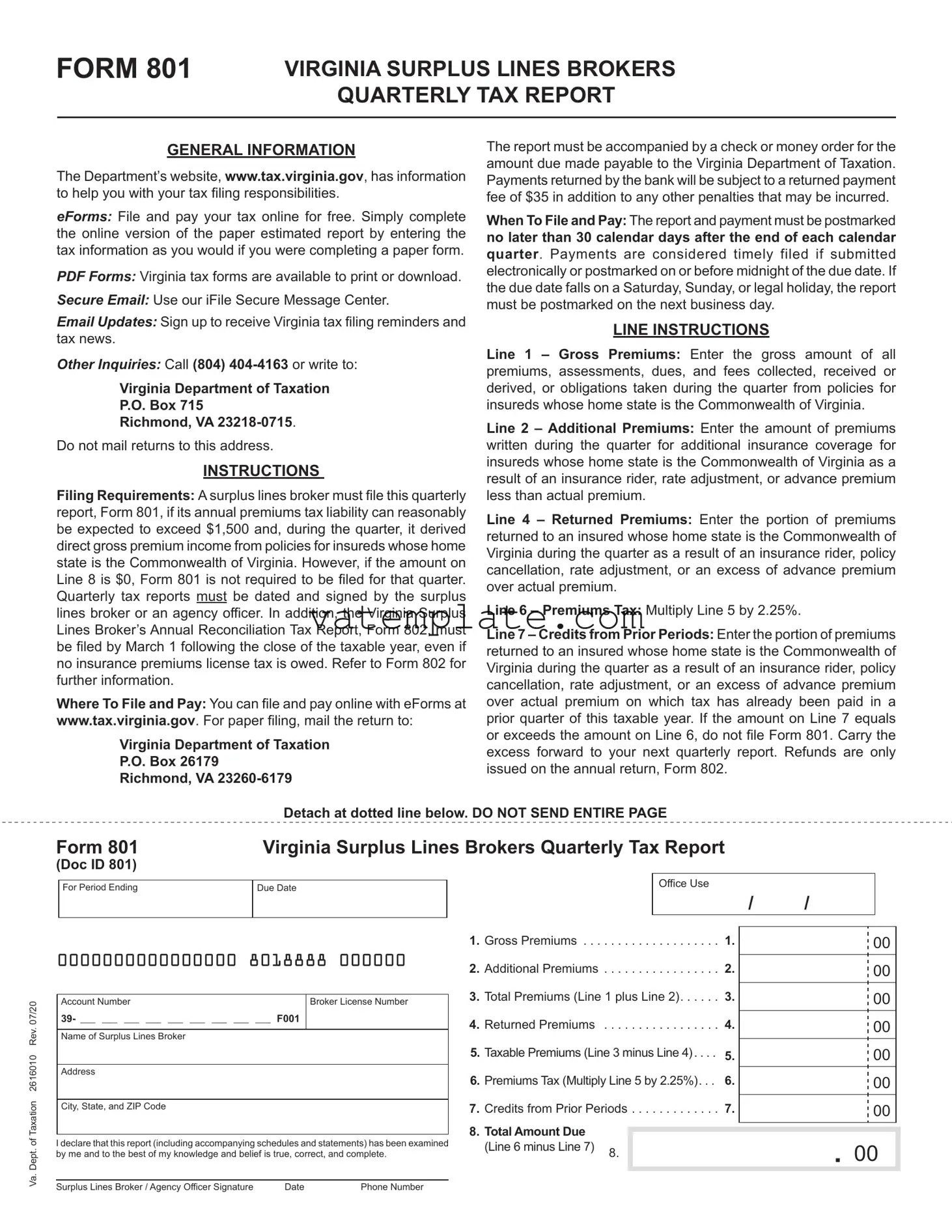Form 801, known as the Virginia Surplus Lines Brokers Quarterly Tax Report, is a required document for surplus lines brokers in Virginia. These brokers must file this report quarterly if their annual premiums tax liability is expected to exceed $1,500. The form is used to report direct gross premium income derived from policies for insureds whose home state is the Commonwealth of Virginia.
Any surplus lines broker operating in Virginia whose annual premiums tax liability can reasonably be expected to exceed $1,500 must file Form 801. This requirement applies if, during the quarter, they received direct gross premium income from policies for insureds based in Virginia.
Form 801 can be filed in two ways:
-
Online with eForms at the Virginia Department of Taxation’s website.
-
Via mail, by sending the completed form and a check or money order for any amount due to the Virginia Department of Taxation’s mailing address designated for this purpose.
The report and the accompanying payment must be postmarked no later than 30 calendar days after the end of each calendar quarter. If submitted electronically or postmarked by midnight of the due date, payments are considered timely. Should the due date fall on a Saturday, Sunday, or legal holiday, the report should be postmarked the next business day.
What if I do not owe any premiums tax for a quarter?
If the amount on Line 8 of Form 801 is $0, indicating no tax is owed for that quarter, the surplus lines broker is not required to file Form 801 for that period.
The required information includes:
-
Gross premiums
-
Additional premiums due to insurance riders, rate adjustments, or advance premiums
-
Returned premiums to an insured as a result of policy cancellations or adjustments
-
Premiums tax calculations
-
Credits from previous periods if applicable
All this information helps calculate the total amount due for the quarter.
What happens if I fail to file or pay on time?
Payments returned by the bank, as well as late filings, can incur penalties. A returned payment is subject to a $35 fee, in addition to any other penalties that may apply for the late or non-filing of Form 801.
Yes, surplus lines brokers are also required to file the Virginia Surplus Lines Broker’s Annual Reconciliation Tax Report, Form 802, by March 1 following the close of the taxable year. This is necessary even if no insurance premiums license tax is owed for that year, ensuring that all annual revenues and tax liabilities are accurately reported.

